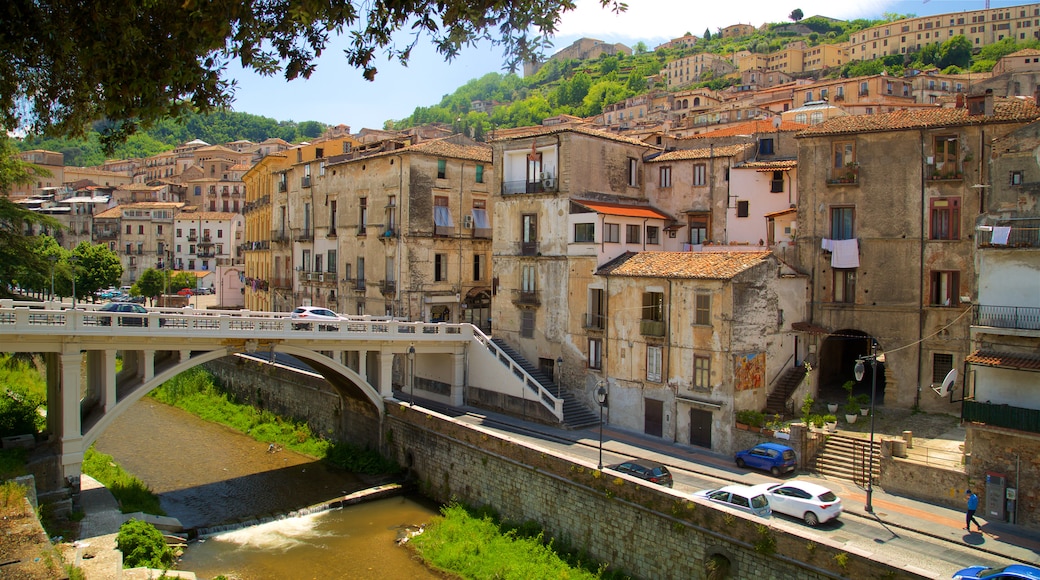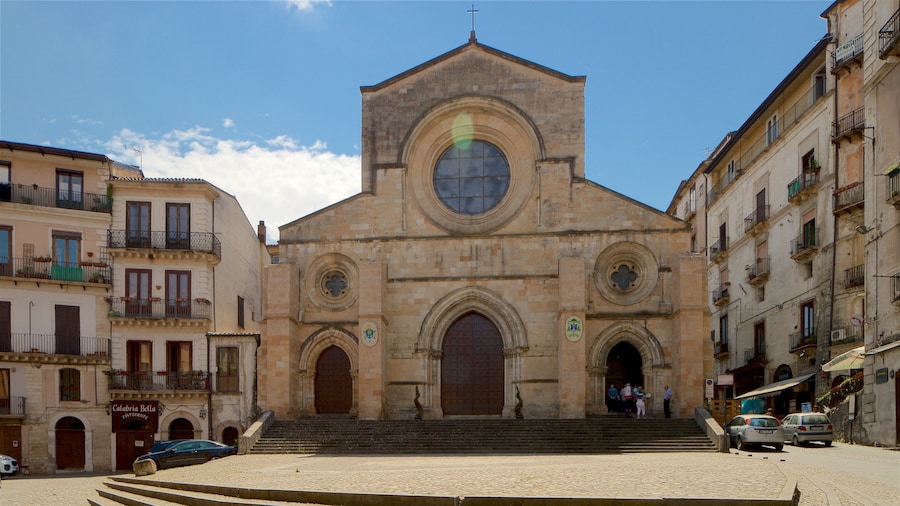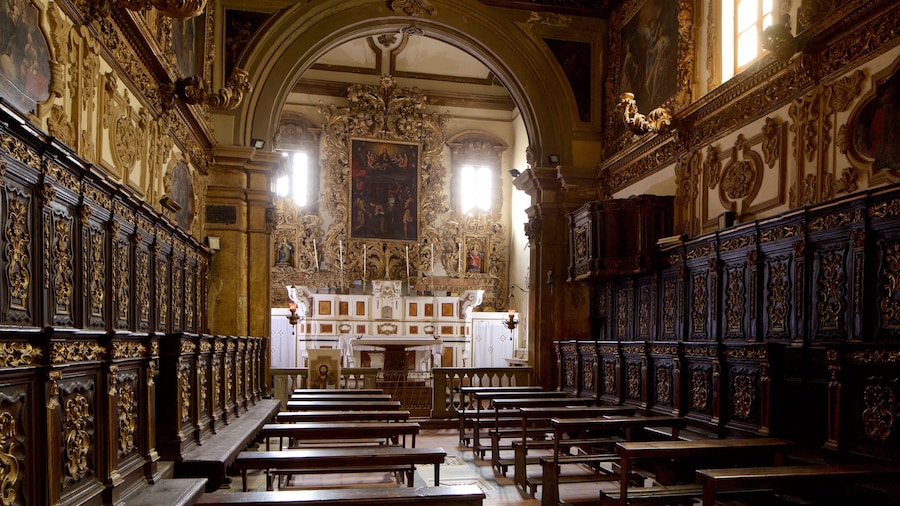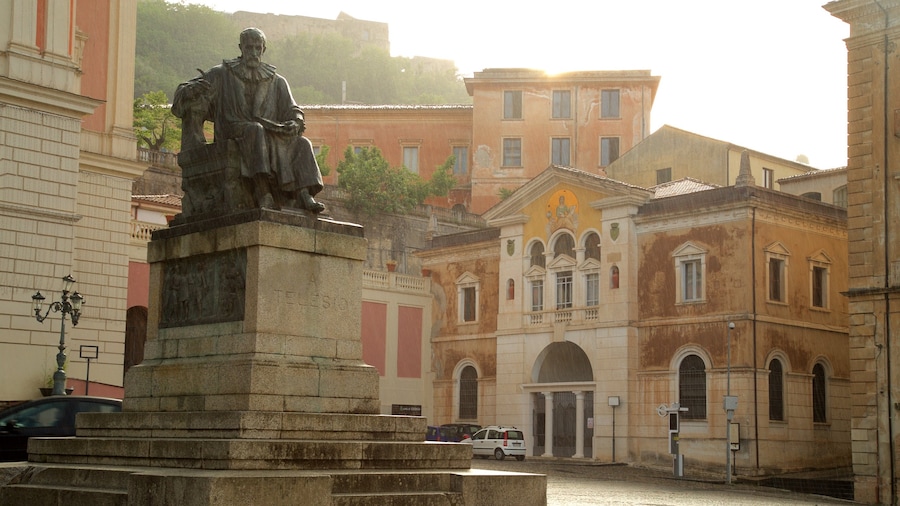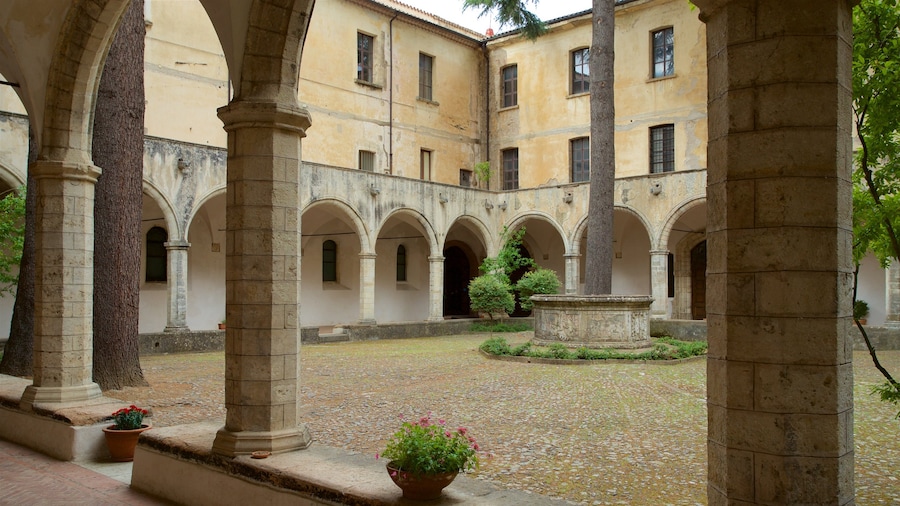Climb the hills of Cosenza to overlook tile rooftops of buildings clustered in the city with a forested mountain backdrop. Bring good walking shoes to explore the narrow cobblestone streets and steps of the Old Town (Centro Storico), much of which was built in medieval times.
Begin to understand the culture and mingle with locals at the Museo all’aperto Bilotti (MAB), an open-air museum stretching along a pedestrianized street in the modern part of the city. Dalí’s Saint George and the Dragon has a prominent position. Look for The Renaissance of Culture by Mimmo Rotella, a sculpture created after 9/11, symbolizing art’s ability to overcome terrorism. Nearby is Rotella’s less abstract sculpture of a green singing wolf. With many other artworks, as well as shops and restaurants, this is a section of town you’re likely to revisit for photos, meals and souvenirs.
The more traditional archaeological museum Museo dei Brettii e degli Enotri provides evidence of the town’s founding in the 4th century B.C. See extensive artworks from southern Italy in the National Gallery. Walk west along narrow streets to reach the Cosenza Cathedral. Step inside this 11th-century structure that has seen several renovations over the centuries, but still features beautiful stained glass and a Byzantine Madonna. Climb to the 1,000-year-old Castello Normanno Svevo and gaze down upon the Old Town.
The University of Calabria is in the northern outskirts of Cosenza in Arcavacata. Visit its botanical garden, paleontology museum and sports events.
Many natural beauty spots are within a 1-hour drive of Cosenza. Head west to enjoy views of the Tyrrhenian Sea. Stretch out on the soft sands of Amantea’s long beach. East lies Sila National Park and north is Pollino National Park, both offering scenic hiking through mountains and forests and past small villages.
Fly into Lamazia Terme’s airport and drive or take a bus to Cosenza in about an hour or ride the train from Naples in 4 to 5 hours or Rome in over 6 hours. Listen for a friendly “Ciao!”
